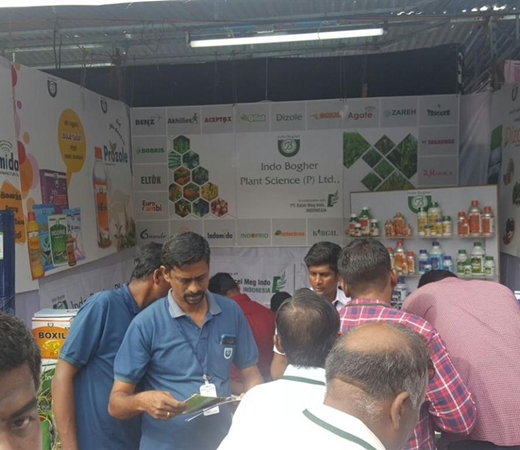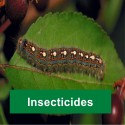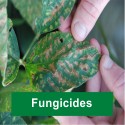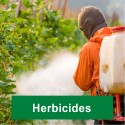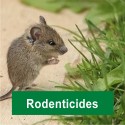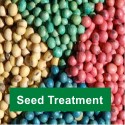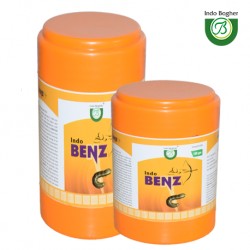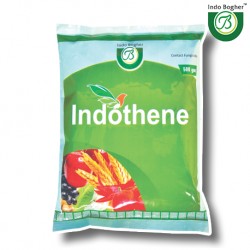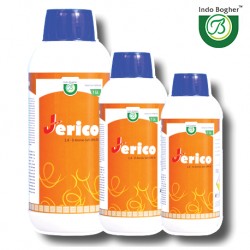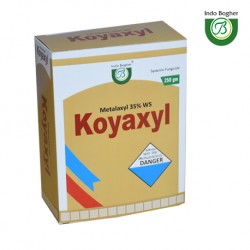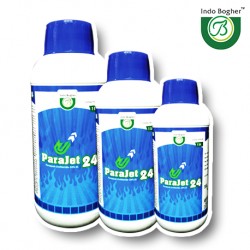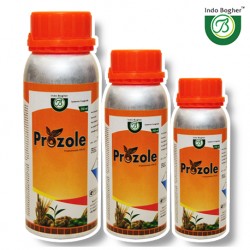Viewed products
-

IND-SULF
Technical Name: Sulphur 80% WDG...
Pesticides are substances that are meant to control pests, including weeds.
The term pesticide includes all of the following: herbicide, insecticides (which may include insect growth regulators, termiticides, etc.) nematicide, molluscicide, piscicide, avicide, rodenticide, bactericide, insect repellent, animal repellent, antimicrobial, fungicide...
Pesticides are substances that are meant to control pests, including weeds.
The term pesticide includes all of the following: herbicide, insecticides (which may include insect growth regulators, termiticides, etc.) nematicide, molluscicide, piscicide, avicide, rodenticide, bactericide, insect repellent, animal repellent, antimicrobial, fungicide and disinfectant (antimicrobial).
The most common of these are herbicides which account for approximately 80% of all pesticide use.
Most pesticides are intended to serve as plant protection products (also known as crop protection products), which in general, protect plants from weeds, fungi, or insects.
Pesticides There are 51 products.
Subcategories
-
Insecticides
Insecticides are substances used to kill insects. They include ovicides and larvicides used against insect eggs and larvae, respectively. Insecticides are used in agriculture, medicine, industry and by consumers. Insecticides are claimed to be a major factor behind the increase in the 20th-century's agricultural productivity. Nearly all insecticides have the potential to significantly alter ecosystems; many are toxic to humans and/or animals; some become concentrated as they spread along the food chain.
-
Fungicides
Fungicides are biocidal chemical compounds or biological organisms used to kill parasitic fungi or their spores. A fungistatic inhibits their growth. Fungi can cause serious damage in agriculture, resulting in critical losses of yield, quality, and profit. Fungicides are used both in agriculture and to fight fungal infections in animals. Chemicals used to control oomycetes, which are not fungi, are also referred to as fungicides, as oomycetes use the same mechanisms as fungi to infect plants.
-
Herbicides
Herbicides, also commonly known as weedkillers, are chemical substances used to control unwanted plants. Selective herbicides control specific weed species, while leaving the desired crop relatively unharmed, while non-selective herbicides (sometimes called total weedkillers in commercial products) can be used to clear waste ground, industrial and construction sites, railways and railway embankments as they kill all plant material with which they come into contact. Apart from selective/non-selective, other important distinctions include persistence (also known as residual action: how long the product stays in place and remains active), means of uptake (whether it is absorbed by above-ground foliage only, through the roots, or by other means), and mechanism of action (how it works). Historically, products such as common salt and other metal salts were used as herbicides, however these have gradually fallen out of favor and in some countries a number of these are banned due to their persistence in soil, and toxicity and groundwater contamination concerns. Herbicides have also been used in warfare and conflict.
-
Rodenticides
Rodenticides, colloquially rat poison, are typically non-specific pest control chemicals made and sold for the purpose of killing rodents. Some rodenticides are lethal after one exposure while others require more than one. Rodents are disinclined to gorge on an unknown food (perhaps reflecting an adaptation to their inability to vomit), preferring to sample, wait and observe whether it makes them or other rats sick. This phenomenon of bait shyness or poison shyness is the rationale for poisons that kill only after multiple doses. Besides being directly toxic to the mammals that ingest them, including dogs, cats, and humans, many rodenticides present a secondary poisoning risk to animals that hunt or scavenge the dead corpses of rats.
-
Growth Promoters
Antibiotic use in livestock is the use of antibiotics for any purpose in the husbandry of livestock, which includes treatment when ill (therapeutic), treatment of a batch of animals when at least one is diagnosed as ill (metaphylaxis, similar to the way bacterial meningitis is treated in children), and preventative treatment (prophylaxis). The use of subtherapeutic doses in animal feed and water to promote growth and improve feed efficiency is discouraged by the FDA as part of their Veterinary Feed Directive, which seeks voluntary compliance from drug manufacturers to re-label their antibiotics. Nevertheless this article focuses on the use of antibiotics for growth promotion, which has been banned in Europe since 2006, and on legislation regarding antibiotic use in farm animals in the USA.
-
Seed Treatment
In agriculture and horticulture, seed treatment or seed dressing is a chemical, typically antimicrobial or fungicidal, with which seeds are treated (or "dressed") prior to planting.
Less frequently, insecticides are added. Seed treatments can be an environmentally more friendly way of using pesticides as the amounts used can be very small.
It is usual to add colour to make treated seed less attractive to birds if spilt and easier to see and clean up in the case of an accidental spillage.
-
INDO BENZ
Technical Name: Emamectin Benzoate 5% SG Target Crops: Grapes, Redgram, Cotton, Cabbage, Chickpea, Brinjal, Okra and Chilli Target Insects: Thrips, Pod Borer, Bollwarms, Diamond Back Moth, Pad Borer, Fruit & Shoot Barer and Mites Dosage: 40gm - 90gm / Acre Shelf Life: 24 Months from MFG Date
-
INDOMIDA
Technical Name: Imidacloprid 17.8% SL Target Crops: Grapes, Mango, Cotton, Sugarcane, Paddy, Citrus, Bhendi, Groundnut, Sunflower, Tomato and Oktra Target Insects: Flea Beetle, Hopper, Aphid, Whitefly, Jassids, Thrips, Termite, BPH, WBPH, GLH, Leaf Miner and Psylla Dosage: 100ml - 150ml / Acre Shelf Life: 24 Months from MFG Date
-
INDOPRID
Technical Name: Acetamiprid 20% SP Target Crops: Cotton, Rice, Cabbage, Okra and Chilli Target Insects: Whiteflies, Jassids Aphids, BPH, Aphids and Thrips Dosage: 20gm - 40gm / Acre Shelf Life: 24 Months from MFG Date
-
INDOTHENE
Technical Name: Mancozeb 75% WP Target Crops: Grapes, Guava, Potato, Banana, Wheat Cumin, Jowar, Tomato, Paddy, Cauliflower, Maize, Chillies, Groundnut and Apple Target Diseases: Angular Leaf Spot, Downy Mildew, Anthracnoes, Brown & Black Rust, Blight, Buck Eye Rot, Blast, Collar Rot, Leaf Spot and Tikka Diseas Dosage: 600gm - 800gm / Acre Shelf Life:...
-
INDPHOS
Technical Name: Monocrotophos 36% SL Target Crops: Cotton, Paddy, Maize and Pea Target Insects: To Be Update Dosage: 500 - 600 ml / Acre Shelf Life: 24 Months from MFG Date
-
JERICO
Technical Name: 2-4 D Amine Salt 58% SL Target Crops: Potato, Wheat, Aquatic Weeds, Sorghum, Non Crop Area and Maize Target Weeds: Convolvulus arvensis, Portulacaca oleracea Asphodelus tenuifolius Chenopodium album, Cyperus iria, Portulaca oleracea, Convolvulus arvensis, Melilotus alba, Fumaria spp and Asphodelus tenuifolius Dosage: Vary from 340ml -...
-
KARGIL
Technical Name: Lambda Cyhalothrin 5% EC Target Crops: Red Gram, Mango, Cotton, Chickpea, Rice, Onion, Brinjal, Okra, Chilli and Groundnut Target Insects: Pod Borer, Pod Fly, Hoppers, Bollwarms, Jassid, Thrips, Shoot & Frit Barer, Leaf Folder, Stem Borer, GLH, Gall Midge, Hispa, Mite, Leaf Hopper and Leaf Miner Dosage: 300ml - 400ml / Acre Shelf Life:...
-
KATAVE
Technical Name: Chlorpyriphos 50% EC Target Crops: Cotton and Rice Target Insects: Bollwarms, Stem Borer and Leaf Roller Dosage: 500ml / Acre Shelf Life: 24 Months from MFG Date
-
KOYAXYL
Technical Name: Metalaxyl 35% WS Target Crops: Maize, Bajra, Sorghum, Sunflower and Mustard Target Diseases: Sorghum Downy Mildew, Sugarcane Downy Mildew, Philippine Downy Mildew, Brown Stripe Downy Mildew, Downy Mildew and White Rust Dosage: 600gm - 700gm / 100kg Seed Shelf Life: 24 Months from MFG Date
-
LADDER
Technical Name: Profenofos 40% + Cypermethrin 4% EC Target Crops: Cotton Target Insects: Bollwarm Complex Dosage: 400ml - 600ml / Acre Shelf Life: 24 Months from MFG Date
-
PARAJET
Technical Name: Paraquat Dichloride 24% SL Target Crops: Grapes, Potato, Cotton, Wheat, Tea, Aquatic Weeds, Rice and Rubber Target Weeds: Cypeus rotundus, Cynodon dactylon, Convolvulus ssp, Portulaca sp, Tridax sp, Chenopodium sp, Angallis arvensis, Triantheme monogyna, Digera arvensis, Cyperus iria, Grassy and Broadleaved Weeds Dosage: 500ml to 1500ml...
-
PROZOLE
Technical Name: Propiconazole 25% EC Target Crops: Wheat, Tea, Rice, Groundnut and Soybean Target Diseases: Karnal Bunt (Neovossia Indica) Leaf Rust / Brown Rust (Puccinia Recondite f. sp. Tritici Stem Rust / Black Rust (B. gaininis f. sp Tritici) Stripe Rust Shealth Blight, Shealth Blight, Eraly Spot and Late Laef Spot Rust Dosage: 100ml - 200ml / Acre...
-
PYRIT (PET)
Technical Name: Cypermethrin 10% EC Target Crops: Cotton, Wheat, Cabbage, Brinjal, Okra and Sunflower Target Insects: get Insects: Spotted Bollworm, American Bollworm, Pink Bollworm, Shootfly, Diamondback Moth, Fruit & Shoot Borer and Bihar Hairy Caterpillar Dosage: 250 - 300ml / Acre Shelf Life: 24 Months from MFG Date
-
QUIKTOX
Technical Name: Cypermethrin 3%+Quinalphos 20% EC Target Crops: Cotton and Brinjal Target Insects: American Bollwarm, Spotted Bollwarm, Jassids Shoot and Fruit Borer Dosage: 400ml - 500ml / Acre Shelf Life: 24 Months from MFG Date
-
RAJATRIN
Technical Name: Lambda Cyhalothrin 2.5% EC Target Crops: Cotton and Rice Target Insects: Bollwarms, Jassids, Thrips, Leaf Folder, Stem Borer, GLH, Gall Midge and Hispa Dosage: 250ml - 400ml / Acre Shelf Life: 24 Months from MFG Date


